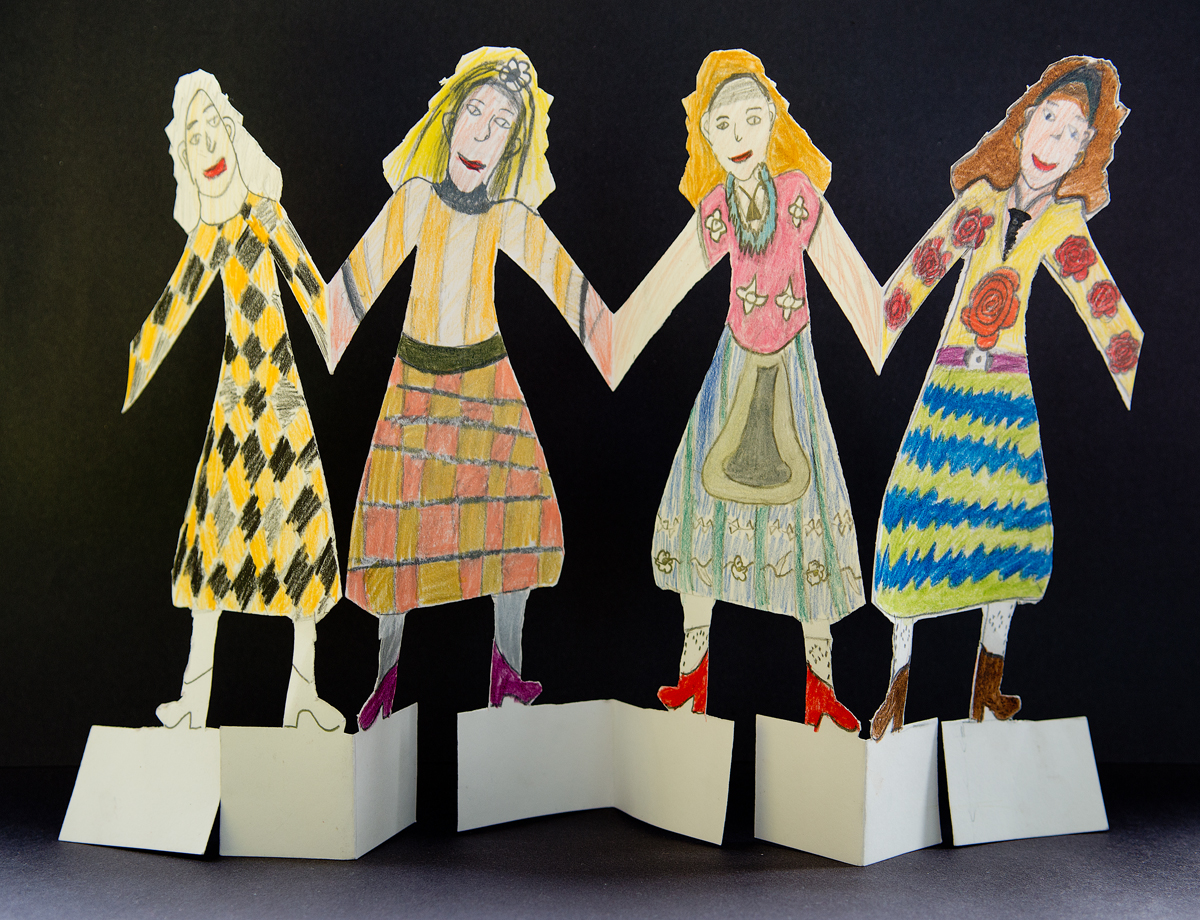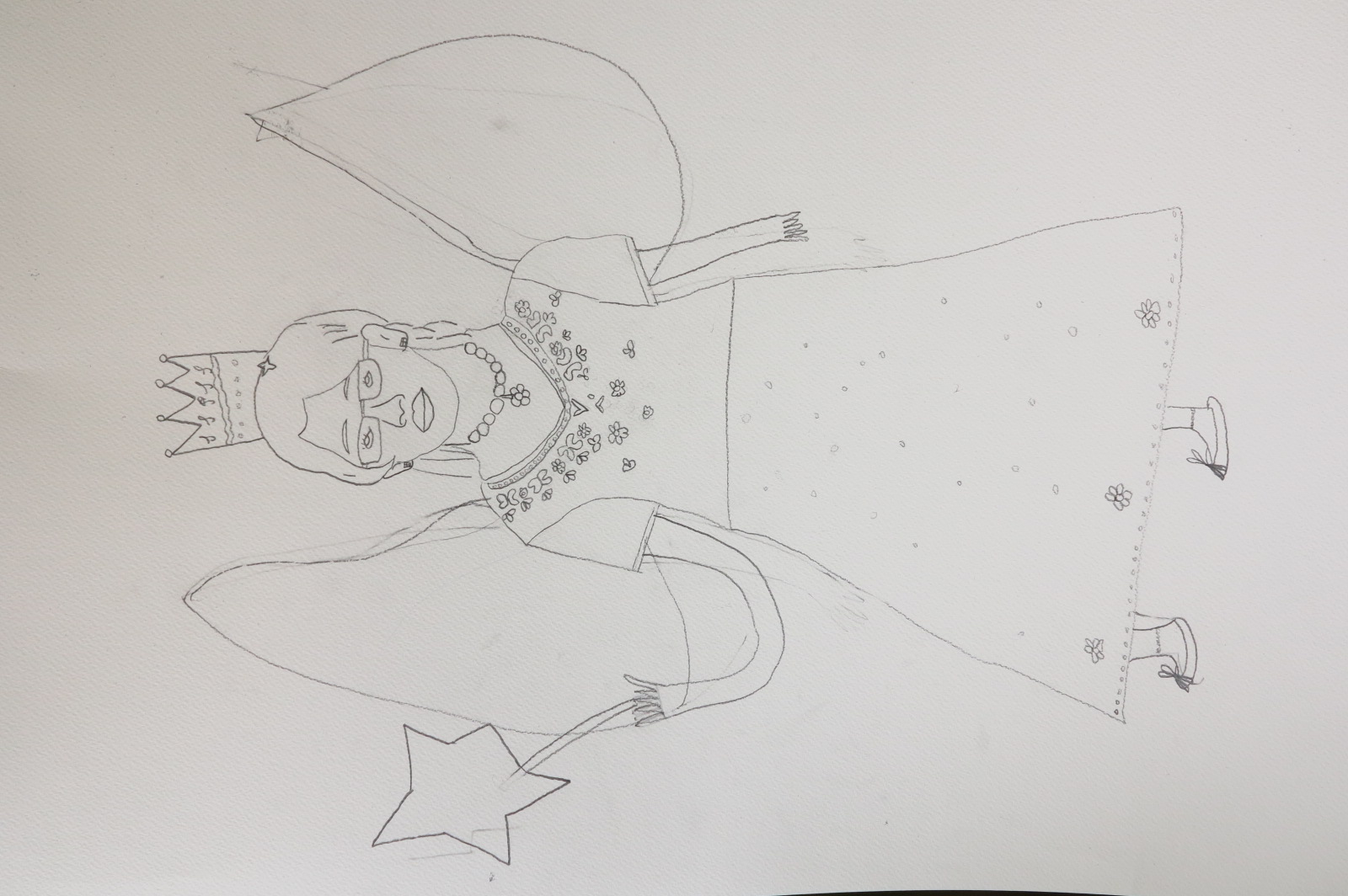Mater Dei Primary School (1874-2012) St. James’ Primary School (2013-present day) - Ireland
Region: Dublin 8
Other schools in the Quint Blog: Koskelan Koulu (Finland), Magic Hill (Czech Republic),Escola Frei Bartolomeu dos Mártires (Portugal), Shottermill Junior School (UK)
Creative Connections Project: Children’s concept of national and European identity
St. James’ primary school, formerly known as Mater Dei National School, is in an area of severe disadvantage, still scoring very low on all possible indicators of social deprivation and exclusion. Pupils come from families living in various degrees of socio economic hardship, highly vulnerable to early school leaving and subsequent social problems. Dublin 8, where the school is positioned, has the highest area of flat complexes in Ireland. In the recent past, families from various parts of Eastern Europe, Africa, Philippines and some other parts of Asia have moved into the area resulting in a much more multicultural cohort of pupils attending the school.
Creative Connections
In 2006 the school was accepted into the Delivering Equality of Opportunity in Schools (DEIS) programme. As a result the pupil / teacher ratio was reduced in both junior and senior cycle classes. In 1997, in an attempt to address social and educational disadvantage, schools were invited to identify interventions that would serve to support them and more specifically the local children they catered for. As a result of this process, an art programme called Creativity in the Classroom was devised, resulting in meaningful collaboration between teacher, visiting artists and the pupil population.
The Creative Connections team in Mater Dei was comprised of two participant teachers, which included the class teacher and a resident artist/educator, who led the project. The responsibilities of facilitating the project were divided between both the artist and class teacher. Both class teacher and resident artist worked together to enable the children to explore their sense of national and European Identity. Seventeen girls from the fifth class took part in the project. The class teacher predicted that the pupils would work well with the resident artist. However, both felt that the children would struggle with the concept of citizenship within Europe as the Irish children in the class had little experience of travelling outside of their own community. It was also predicted that the children from other countries would have more knowledge and ideas about citizenship than their Irish peers. Four out of the seventeen pupils in the class originated from Slovakia, Latvia, Romania and India.
Aims and Framework
One of the primary aims of the project was to explore and engage in contemporary art practice as a means to examine the children’s concept of national and European identity and to extend that lens to examine citizenship issues that would emerge through the exploration of the self and others. The project was facilitated over a fifteen-week period in Mater Dei. Two hours per week were designated to the exploration and production of art. The hours allocated to the blogging component of the project varied depending on the access to the designated computer room in the school. Both class teacher and resident artist initially noted that the blogging process encouraged a sense of connectedness between the children and their European peers and enabled pupils’ voice by responding to each other’s artwork that they had created and uploaded onto the Creative Connections site.
Prior to the project commencing the teachers participated in two training sessions facilitated by the CC Irish team in the National College of Art and Design (NCAD). The training sessions included a technical training day where by participant teachers were instructed on the various technical aspects of how to use and navigate the Creative Connections website and upload pupil’s artwork to the appropriate areas. The second session focused on methodology and the curriculum material that the participant teachers could use to deliver the CC programme in the classroom context. Over the duration of the Creative Connections project, the CC team in NCAD created curriculum-training materials, specific to the needs of the projects participant pupils and teachers. Also generic resources were created and shared with the Creative Connections participant teachers in the partner countries.
The project in Action
The resident artist began the project by initiating a mapping exercise to enable the children to identify places they had visited across mainland Europe and to reflect on the similarity and differences they experienced whilst visiting different countries in relation to Ireland.
At the initial stages of the project the children’s understanding of Europe was limited and confused. In order to re-engage the children, the resident artist facilitated them to explore their local, immediate environment as a context in which to make linkages with personal identity. The conversation then shifted to question the children about how they felt a tourist might view their local area and how countries are often represented by stereotype images and beliefs. Negative assumptions emerged on how the children viewed and experienced their local environment, detailing the culture of drug abuse and associated social problems that prevailed in the area. Both the participant teacher and artist discussed the concept of stereotyping among the children. In response to this, the children created their own alternative St. Patrick’s Day Parade, comprising of designs for a parade of floats.
The resident artist observed that the floats represented the:
Children’s vision of Ireland and what they felt should be represented in the parade to show a ‘true’ image of Ireland.
Each child used a variety of art processes including collage, painting and drawing to complete their design and make a small full body self-portrait that was added to the parade. Both participant artist and class teachers felt this was a very successful class, the concept was one the children understood; they enjoyed the creative process of designing their parade and working as a collective.
The resident artist enabled the children to explore and visually represent their identity through a variety of means, recording objects and traditional or contemporary costume through drawing and photography. In tandem with the art lesson the class teacher and children explored traditional costume around Europe through a variety of imagery. This facilitated discussion on why and what was being worn by different cultures and how clothing is used to represent ones identity or ethnic origins. The conversation was extended to assess the differences between male and female costume, jewellery and headdress being worn. In response to the stimulus the children created paper dolls out of card. These standing paper figures could then be decorated in ‘traditional’ costume, meaning that each child could create a traditional costume either inspired by images shown by the class teacher or inspired by their own imagination.


The children’s artwork culminated in a creation of a Metamorphose Animation inspired by the work of the Irish Artist Alice Maher that they had viewed in the Irish Museum of Modern Art (IMMA). The resident artist reflects on her experience of seeing the children’s work emerge. Two researchers from NCAD facilitated the recording of the animation.
The resident artist reflected on the children’s experience of creating the animated piece and how it provided a tangible process to explore their identities by stating the following:
At times we really struggled with the idea of identity especially Irish or European identity but in these fluid drawings the children started with an image of themselves which then could be altered into any identity, character, being, organism, creature or even shape. The metamorphose taking place on their sheets of drawing paper was being directed and controlled by them, this process allowed them complete freedom and no restrictions, there were no guidelines, no parameters about what the drawings should represent.
‘Being’ European
At the initial stages of the project both participant teachers observed that the children had no concept of where they were from in relation to Dublin, Ireland and the greater world. They identified capital cities as countries and located India in Europe. Although the children were able to conceptualise that their identity could be individual and different to that of their peers, they struggled with grasping the concept of an identity specific to Europe.
As the profile of the class comprises of three children who originated from Europe and one child from India, the resident artist decided to shift the focus to capture the diversity that existed in the classroom as a means to tangibly explore concepts of identity. The decision to explore custom as a representative of their identity was a pivotal point in the project for the children. Children wore an array of clothes to express their concept of both contemporary and traditional styles of dress. The children from Slovakia, Latvia, Romania and India wore traditional costume symbolic of their ethnicity.
The resident artist remarked that it ‘was quiet beautiful to see as well as the sense of pride these four girls took in their heritage’. This action allowed for rich conversation to enable the children to explain to their peers about tradition and custom and take ownership of the project.
The class teacher noted that the children’s understanding of Europe was crystallised by:
Talking to children of their own age and they are not really looking at a landmark or a building or learning what the capital city of somewhere is and trying to understand what Europe is in regards to governments…it is more about the children they know and it was great that they had those children in the classroom or I don’t think it would have been the same.
This experience captured through pupils voice allowed for a deeper understanding of a sense of self and contextualised themes of similarity and difference, sameness and individuality and ‘gave a sense of different identity or a different European Identity’ among the children.
Both the teacher and resident artist noted that the children who originated, or whose parents originated from Europe, viewed Ireland as a temporary place where they were residing before they would return to their place of origin in mainland Europe. The children’s awareness of their sense of place in relation to Europe and experience of travel to their ‘homeland’ allowed for a deeper sense of connection to Europe then that of their peers who had been born in Ireland and where of Irish parentage. The remainder of the children in the class who had no family connections to Europe tended to focus on holidays to resorts in Spain as a context in which to understand their experience of sampling cultural life in Europe.
Contemporary art as a space for learning - Artists used as a stimulus for themes
Questioning the notion of self in terms of Irish and European identity through looking and responding to contemporary art practice characterised the delivery of the CC project in St James primary school.
The teacher’s comment:
I was interested in the idea that a lot of artists were playing around with the idea of belonging or disconnected or misplaced. I thought that was a really interesting concept to work with the children on.
Resident Artist
As part of the Creative Connections project the participant teacher and resident artist incorporated a visit with the children to IMMA to view the work of Alice Maher, one of the selected Irish artists for the Creative Connections Connected Gallery. Alice Maher’s work effectively underpinned the children’s exploration of identity and interrogated the concept of how something can change and re emerge, as the artist controls the evolution of the image of the self in her animated work.
The resident artist reflects on the children’s art -work that was created in response to Alice Maher’s work:
They really got that sense that they could control their identity in a way within this picture because we started with an image of themselves.
The children also addressed the theme of home as a context in which to explore individual identity. The resident artist noted that home was a recurring theme that closely aligned with the work of a selection of artists in the Connected Gallery who addressed issue of place and belonging in their work. The children explored the work of Heli Kurunsaari Until the third and fourth generation, Jaakko Heikkila’s Mirja by the River, Lea ja Pekka Kantonen’s My favourite place and Paul Seawright’s Missing to explore different concepts of how a sense of place can be presented in contemporary art practice. The artist David Cerny’s Entropa was used as a stimulus to interrogate notions of stereotypes. Children found it difficult to identify how countries and people in Europe are stereotyped as they had little knowledge or experience of the countries in Europe that they were discussing, having never visited them.
Reflections
Both the teachers and resident artist felt that the project enabled the children to become more aware of the differences and similarities that existed within the classroom. This was established through the exploration and discussion around primary evidence, such as costume and objects, representative of differing cultures and customs that children presented and responded to.
The blogging remained problematic in terms of marrying it together with the production of artwork and striking a balance between the different elements of the project. The exploration of citizenship issues and concepts was marginally explored.
The resident artist expresses the problematic nature of trying to embed a citizenship concept through the art making process in the following reflection:
I think often what happens when you work with children is that there is a natural process that takes place where things might go a direction that you didn’t anticipate beforehand but it can go that way because it is art. You have that chance to let it move that way. So there is a certain freedom to it but in this case it had to come back to citizenship or it had to come back into identity. That was the theme we wanted the children to work with and I think it felt more constrained than it felt with other projects.
The class teacher found the Creative Connections website difficult to navigate.The process of photographing and uploading the children’s art work to the site was time consuming and encroached on the time given to discuss, respond and reflect on the art work in both the lesson and in the Quad Blog. As each blogging partner began the project at different scheduled times there was no other partner active on the blog for the first four to five weeks of the project. The lack of responses greatly impinged on the children enthusiasm for the project at the early stages. The resident artist evaluated that it would have been beneficial for the children to start with the exchange of information about their lives to encourage conversation on a personal level. Due to the strict policy guidelines over Internet usage in Ireland the blogging remained in the confines of the classroom and this in turn affected the fluidity of the conversations. As they had no personal connection with their peers in Europe they felt they were viewing a piece of art with no understanding of the person who created it.Children found commenting on other children’s work complex and challenging and were concerned they might offend their blogging partners.
The class teacher and resident artist suggested that an exchange programme would be extremely beneficial to the children as they could have a tangible experience of how it feels to be part of Europe to ‘actually see, smell and experience another country’ and in doing so create meaningful friendships that goes beyond the technical constraints of the blogging process. Another suggestion was to be more tradition in our approach to connecting to their European counterparts and send ‘a letter written with little things in there something like that kind of exchange, you know, stamps from different countries.’
In reflection the class teacher observed that the pupils own experience defined and characterised the delivery of the project in St James Primary School:
They were the ones who created the conversation and made it interesting for the children because the themes that we were exploring, they would mostly be asking the other children from Slovakia, Latvia, Romania and another child from India as well. They were quite interested in those themes and discussing at a very basic level; at children’s level what it is like to live in those other countries.


